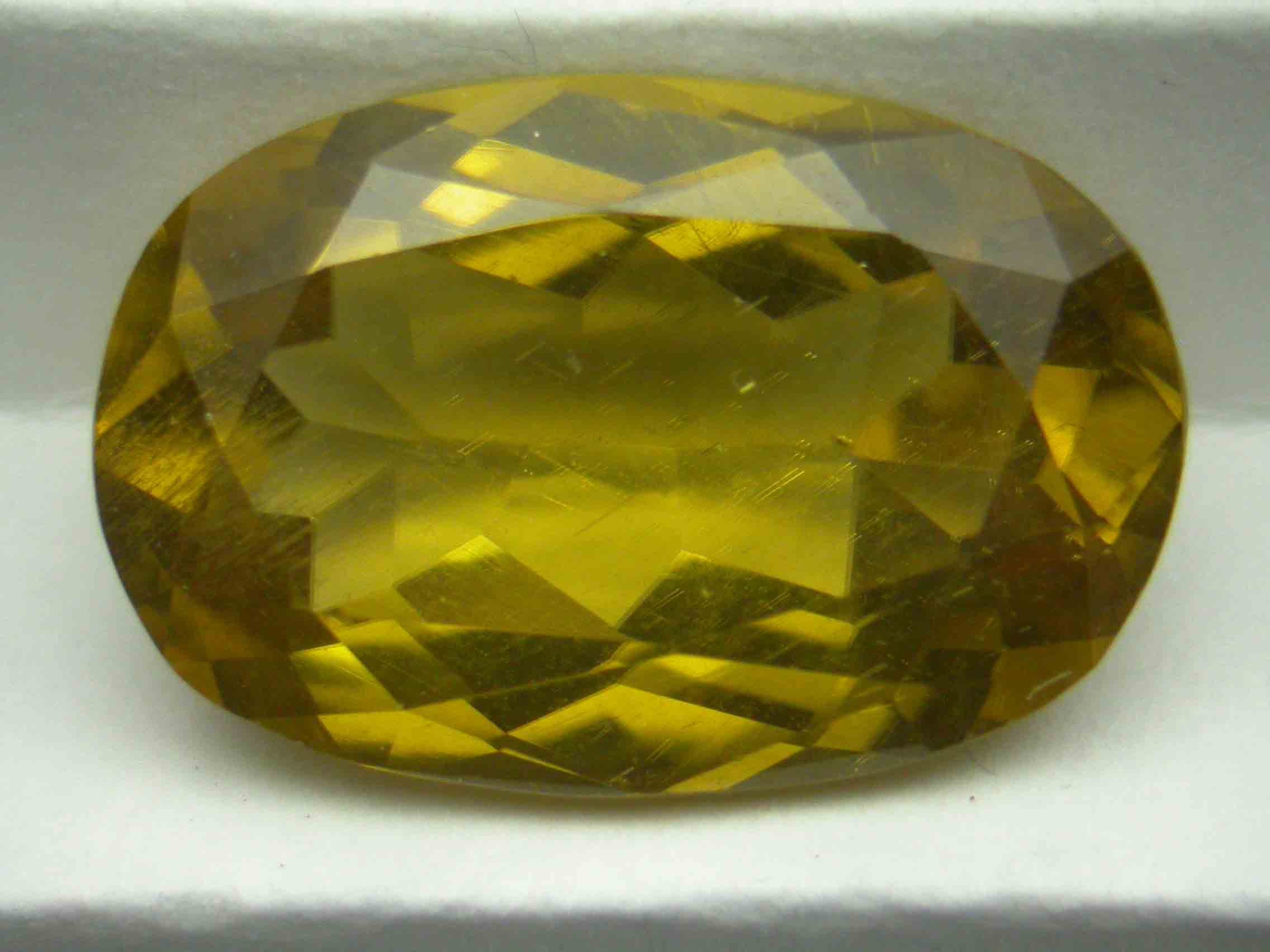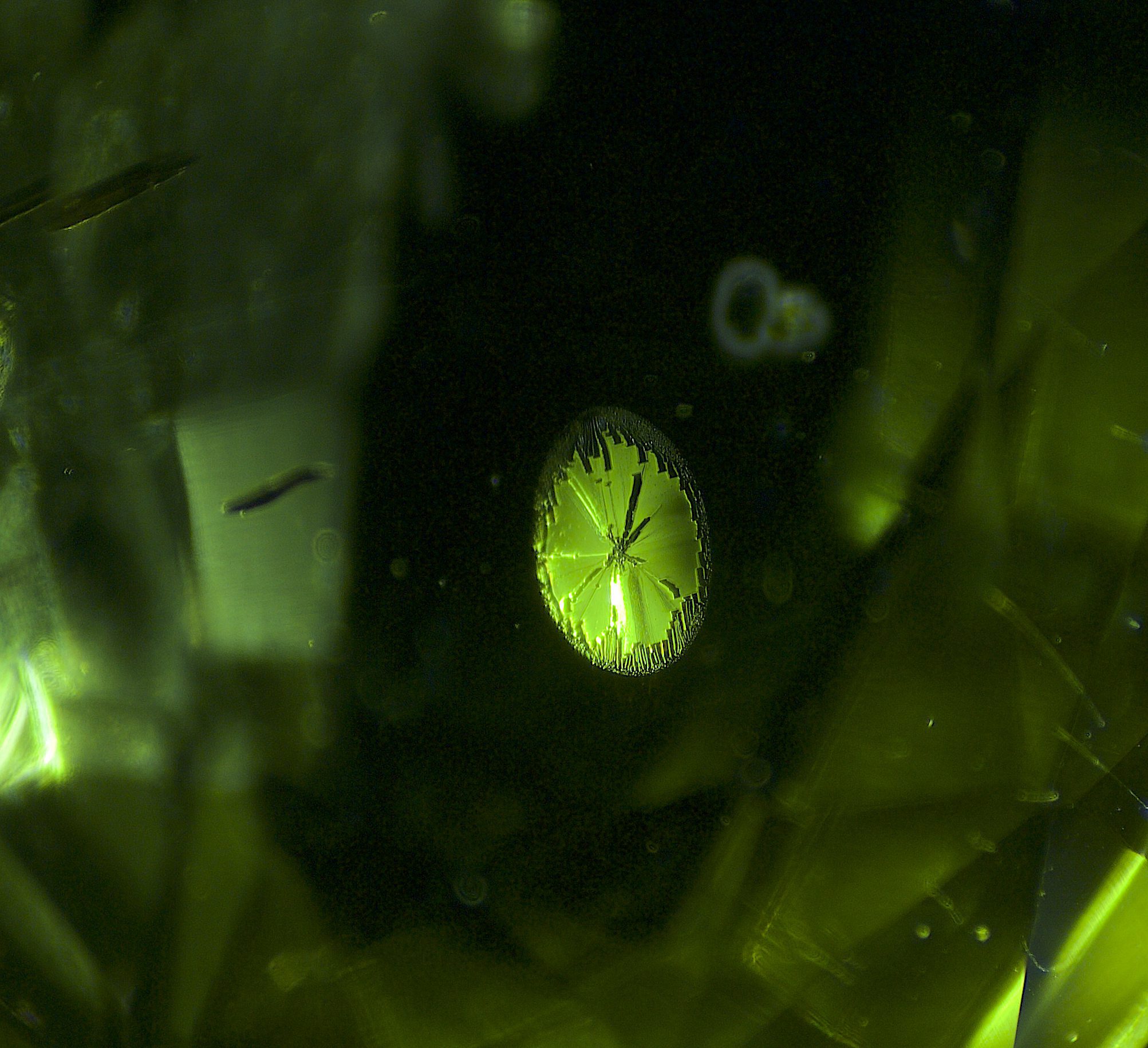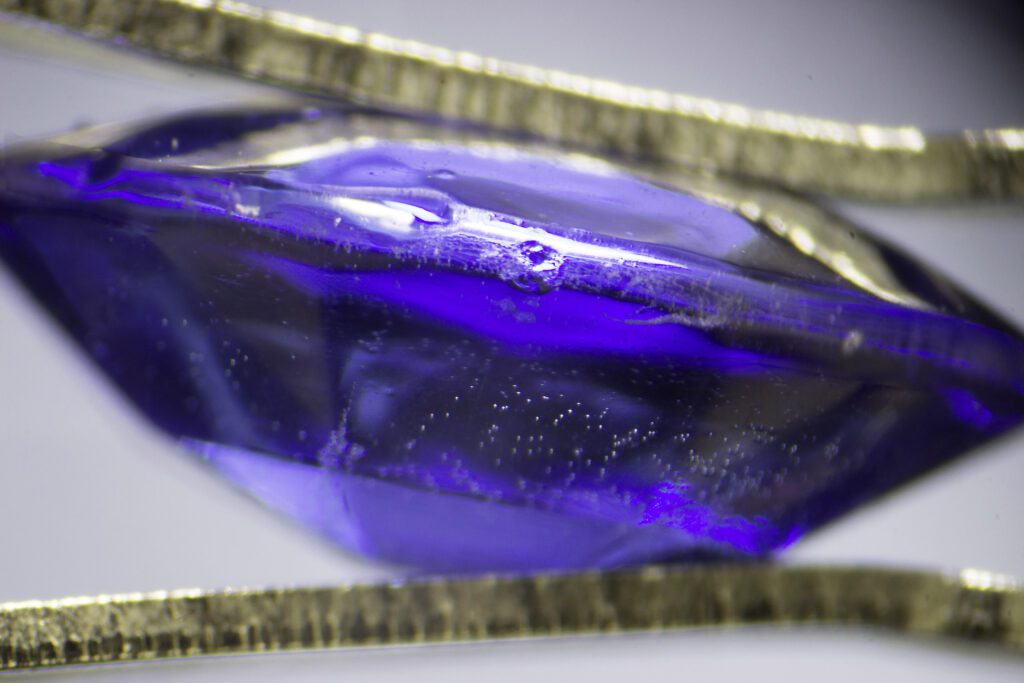The description ‘oily green’ is sometimes used in connection with peridot. It is not intended as a criticism; it is a term which has been traditionally associated with the colour of this stone. Here, Gem-A Tutor Pat Daly explains why this descriptive moniker is used and what it tells us about this vibrant green mineral…
Peridot is a beautiful gemstone that can be brown or yellow, but gem-quality stones are almost always green. Its composition is magnesium silicate with a few per cent of iron, which causes the colour. It is thought that nickel and chromium may modify the colours of some stones, both metals being fairly abundant trace elements in the mantle rocks in which most gem peridot grows.


An oval-shaped peridot with a yellow hue, photographed by Pat Daly.
The History of Peridot
Peridot was found in classical times in the isle of Zabargad in the Red Sea. This was said to be the major source of this gemstone until the 20th century, though Burma (now Myanmar) has also produced large fine stones. Important producers since then have included Arizona in the United States, Norway, Pakistan and, more recently, a large deposit in China, which is supplying fine stones to the jewellery trade.


A lily pad inclusion in peridot, photographed by Gabriel Kleinberg.
In these places, gem-quality peridot grew beneath the Earth’s crust and was brought to the surface by volcanic rocks or, usually after deformation and recrystallization, in large masses of peridotites that formed in the crust.
What are Peridotites?
Peridotites are composed mostly of the mineral olivine, which was named after the fruit of the olive tree because of its yellowish-green colour. In time, the resemblance in colour has been transferred from the fruit to the oil produced from it. Olive oil is such an important product that it is not surprising to find it used as a comparison for the colour of a precious stone. The oil, however, is dominantly yellow, albeit with a greenish tinge, whereas peridot is nearly always decidedly green.


Rough peridot crystals from the Gem-A Archives.
What is ‘Oily’ Peridot?
The mention of oil in connection with gemstones has negative associations with treatment and is not welcomed by those who value peridot partly because it is one of the few gem materials that is hardly ever treated.
Peridot may have a so-called “sleepy” appearance, a slightly reduced transparency because the light is scattered within it by sub-microscopic inclusions or because features such as pavilion facet edges look blurred by the strong doubling seen in some directions through the stones.
These may have suggested the term “oily”. They are sometimes unwelcomed but need not detract from the beauty of a stone. Some scattering, for example, may help to illuminate parts of a faceted stone which would otherwise look dark even in well-proportioned and polished stones.


A biotite inclusion in peridot, photographed by Pat Daly.
What Makes Peridot Unique?
Many commercially significant gem species have a range of colours and optical effects, as well as several named varieties. Peridot, essentially, has only one which has captivated people for thousands of years. Its pleasing green colours and consistently good transparency recommend it to designers, jewellers and their patrons, and the current supply situation is good, regularly providing fine gem material in quantities which allow it to be sold at moderate prices, although the largest and finest cost many thousands of pounds.
Discover more about peridot and other commercially significant gemstones by studying GemIntro – our online-only beginners gemmology course. You may also wish to explore our Gemmology Foundation, which is the best-way to kickstart your career in gemmology and its related professions.
Main image: A faceted peridot gemstone, photographed by the author, Pat Daly.



